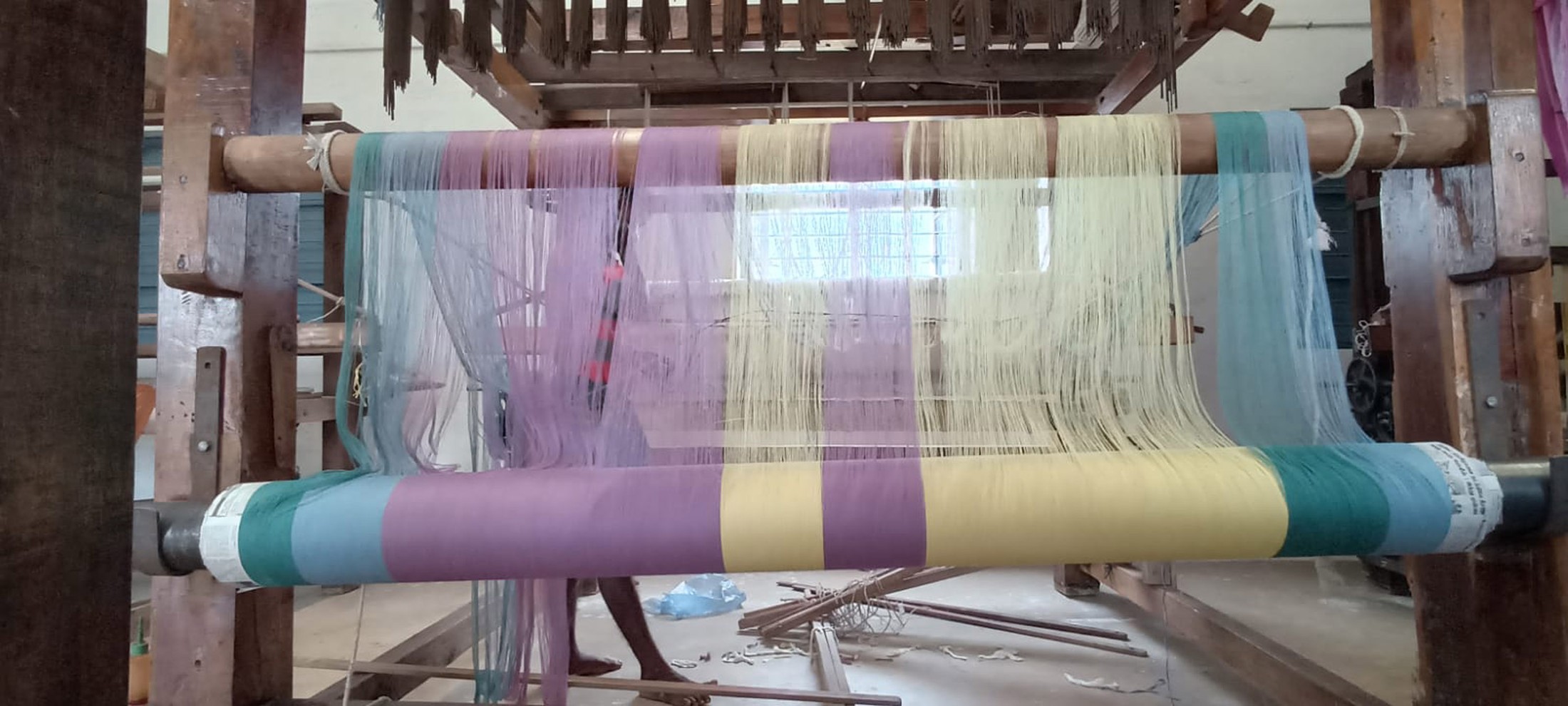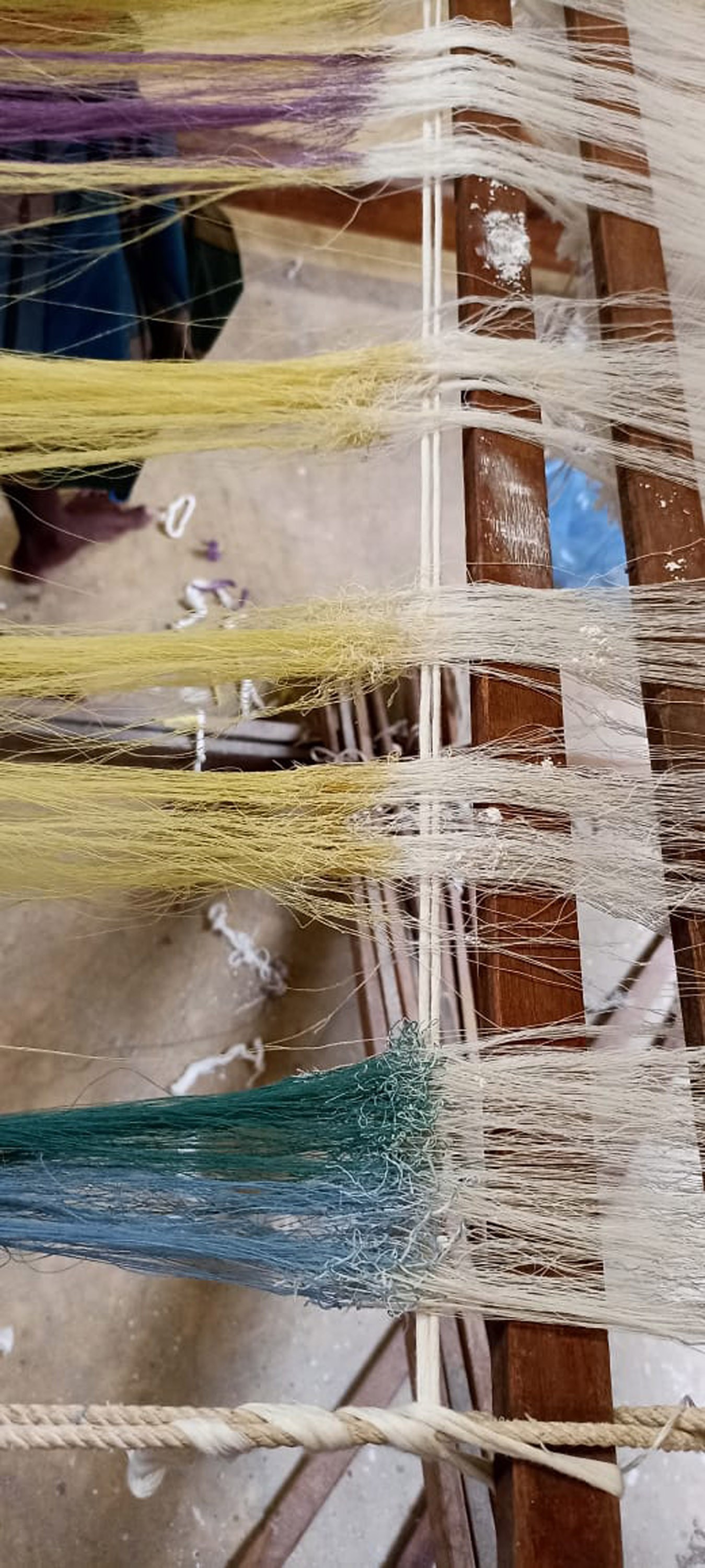As a weaver who has threaded several warps, I can truly appreciate the laborious and detailed work that goes into making a handloom textile. Because of its intricate nature, many weavers who are one of few keeping long-standing traditions alive find themselves without work since industrialized machine looms produce fabric faster and cheaper. In the past, I’ve worked with independent weavers in India who make mashru and ikat fabric, just two of hundreds of types of indiegenous weaving techniques.
Mashru is a traditional satin weave fabric that has a beautiful silky sheen and often comes in bold colored stripes. Consisting of cotton on the inside, and silk threads on the outside, it was really made with a particular function in mind. While the silk on the outer surface gives a luxurious, glossy appearance, the cotton yarns in the back soak up sweat and keep the wearer cool in the hot climate of the deserts. Mashru means “permitted” in Arabic and it is believed that this textile got it’s name when Muslim men, who were not allowed to wear silk, started wearing this fabric. Since the body is only in contact with cotton, and silk is only on the exterior.











